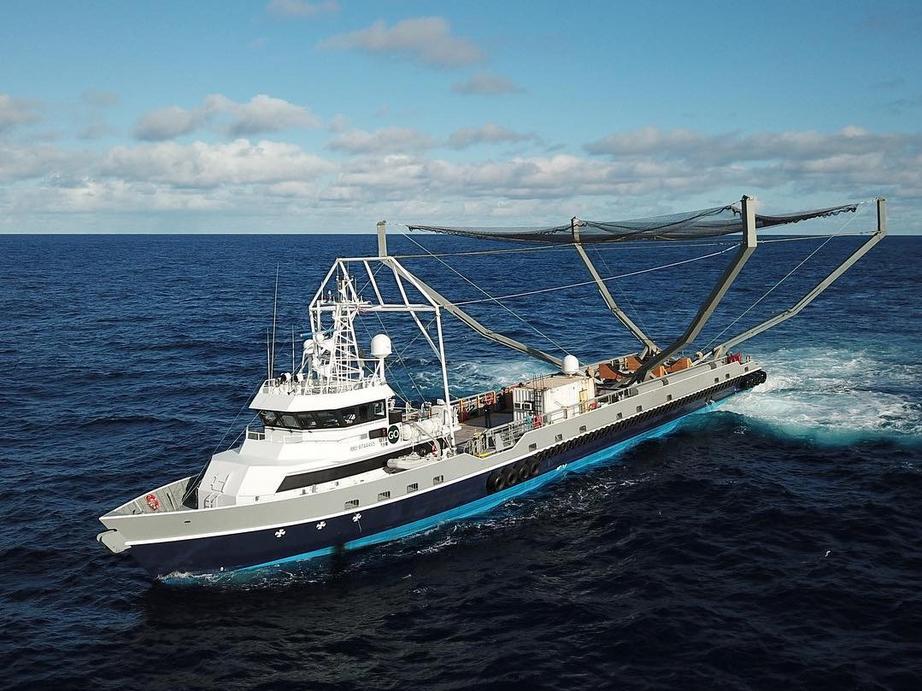SpaceX just launched the first two of nearly 12,000 satellites to blanket Earth in high-speed internet
A SpaceX Falcon 9 rocket lifts of from Vandenberg Air Force Base on February 22, 2018. It carried the Paz satellite and two Starlink demonstration satellites into orbit.
- SpaceX, the aerospace company founded by Elon Musk, launched a Falcon 9 rocket on Thursday at 9:17 am ET (1:17 am AEDT).
- The launch deployed a Spanish radar satellite and two experimental SpaceX satellites.
- The two SpaceX satellites will test aspects of Starlink, a project to bathe Earth in high-speed internet coverage using nearly 12,000 spacecraft.
- SpaceX attempted to recover a $US6 million piece of the rocket, but the fairing didn’t quite hit it’s target.
This story was updated with new information.
SpaceX, the rocket company founded by Elon Musk, launched a Spanish radar satellite atop one of its go-to rockets on Thursday morning.
The satellite, called Paz, will keep an eye on ship traffic across the oceans of the world.
But another payload hitched a ride aboard the Falcon 9 rocket, one the company didn’t publicize: two smaller satellites that are part of Musk’s plan to bathe Earth in high-speed internet coverage.
The scale of the proposal, informally known as Starlink, is incredible. In the coming years, the company hopes to launch 4,425 interlinked broadband-internet satellites into orbit some 700 to 800 miles above Earth, plus another 7,500 spacecraft into lower orbits.
 SpaceX’s founder, Elon Musk, at a press conference in February.
SpaceX’s founder, Elon Musk, at a press conference in February.
That’s nearly 12,000 satellites, more than twice the number of all satellites launched in history, according to a tally by the Union of Concerned Scientists.
Musk and SpaceX have said little about their plan since announcing it in 2015. But since it needs approval from the Federal Communications Commission, detailed documents about the effort are regularly released.
According to FCC documents made public this month, the organisation in November gave SpaceX permission to launch the two experimental spacecraft, called Microsat-2a and Microsat-2b, to test its space-based internet concept.
The mission lifted off from the Vandenberg Air Force Base in California on Thursday at 9:17 a.m. ET – one day later than planned – aboard a Falcon 9 rocket.
Musk confirmed that the launch will test aspects of Starlink.
“Today’s Falcon launch carries 2 SpaceX test satellites for global broadband,” Musk tweeted on Wednesday (before the launch delay). “If successful, Starlink constellation will serve least served.”
A missed catch
 SpaceX’s rocket-fairing-catching boat, ‘Mr. Steven.’
SpaceX’s rocket-fairing-catching boat, ‘Mr. Steven.’
SpaceX sent up the mission using, in part, a reusable first-stage rocket booster that the company launched and recovered in August.
The company said in a release that it would “not attempt to recover Falcon 9’s first stage after launch.”
However, SpaceX attempted to recover the rocket’s roughly $US6-million carbon-fibre fairing, or nosecone, for the first time. The giant piece of hardware parachuted toward a boat, christened “Mr. Steven,” in the Pacific Ocean.
“Going to try to catch the giant fairing (nosecone) of Falcon 9 as it falls back from space at about eight times the speed of sound,” Musk said Thursday on Instagram. “It has onboard thrusters and a guidance system to bring it through the atmosphere intact, then releases a parafoil and our ship, named Mr. Steven, with basically a giant catcher’s mitt welded on, tries to catch it.”
Shortly after launch, Musk tweeted that the fairing “made it back from space” and unfurled its parafoil. The fairing didn’t hit its target, but it proved the concept could work – and could help SpaceX further cut its launch costs and lower the steep price of sending payloads to space.
“Missed by a few hundred meters, but fairing landed intact in water,” Musk tweeted. “Should be able catch it with slightly bigger chutes to slow down descent.” He later posted a photo of one fairing floating on the water.
 A camera on the second stage of a Falcon 9 rocket shows Earth, the freshly deployed Paz satellite, and two experimental SpaceX satellites, called Microsat-2a and Microsat-2b.
A camera on the second stage of a Falcon 9 rocket shows Earth, the freshly deployed Paz satellite, and two experimental SpaceX satellites, called Microsat-2a and Microsat-2b.
The Paz satellite deployed about 11 minutes after launch, and Microsat-2a and Microsat-2b some time after that.
A live webcast of the Paz mission launch on YouTube offered the first-ever (though somewhat fuzzy) glimpses of the two Starlink satellites, which will operate for about a year above Earth.
An announcer said during SpaceX’s live webcast that the company couldn’t show the deployment of the Starlink demonstration satellites because of poor signal coverage.
However, the rocket later beamed down high-resolution video of the satellites deploying.
“First two Starlink demo satellites, called Tintin A & B, deployed and communicating to Earth stations,” Musk tweeted with a clip of them floating into space.

